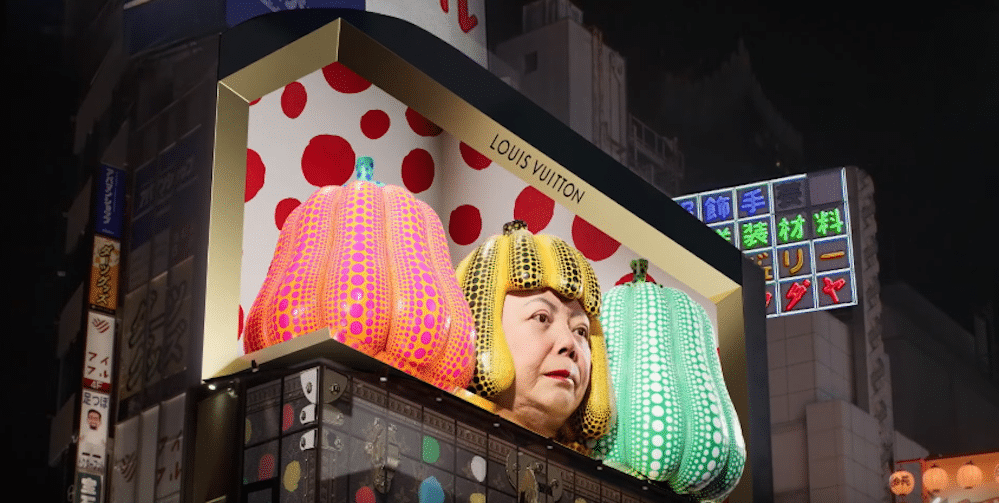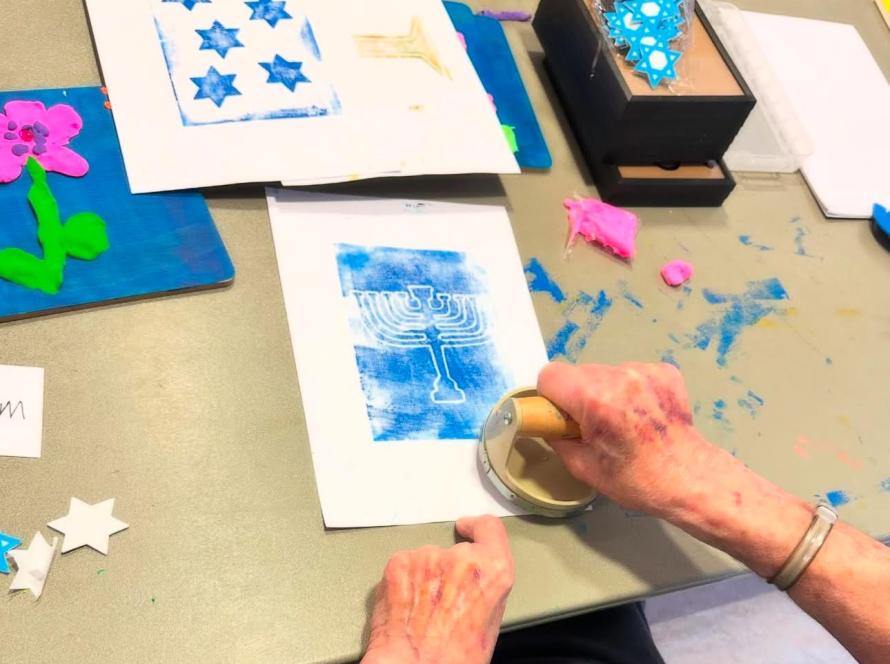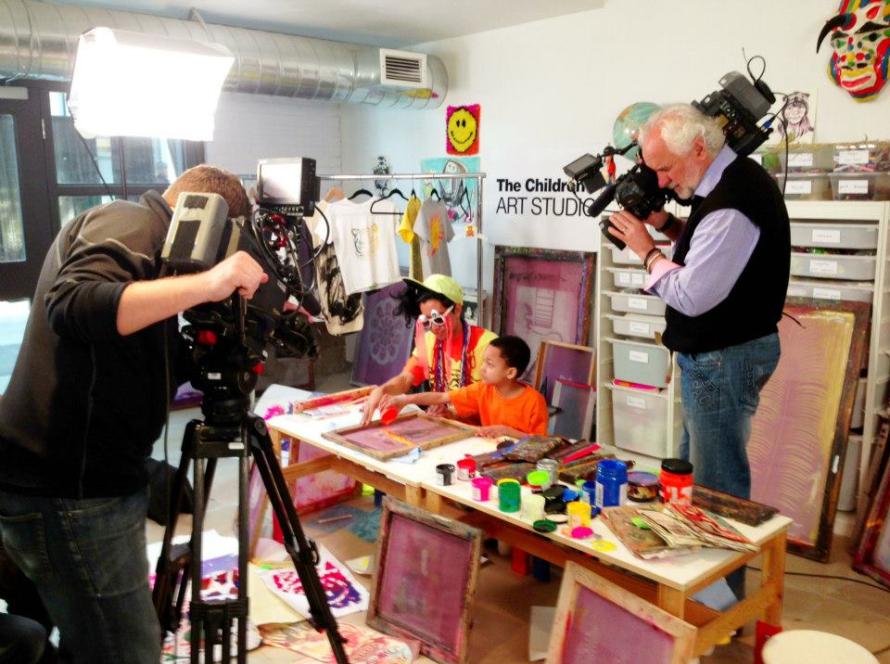Why Japan is Leading the World in Public Art
Japan’s public art scene is renowned for its unique blend of tradition and innovation, captivating people with installations that seamlessly merge with natural landscapes, urban centers, and even the fashion industry. Prominent artists like Yayoi Kusama and Takashi Murakami have not only become icons in the art world but have also collaborated with luxury brands like Louis Vuitton, showcasing Japan’s ability to extend public art into new realms. But Japan’s public art success is also driven by forward-thinking policies and organizations dedicated to making art a core part of everyday life. Initiatives like the “1% for Art” program and The Japan Traffic Culture Association are pivotal in establishing Japan as a global leader in public art.
1. The “1% for Art” Program: Integrating Art into Urban Spaces
A cornerstone of Japan’s public art strategy is the “1% for Art” program, which allocates 1% of the cost of public buildings to art installations. This program ensures that public spaces are not only functional but also visually inspiring, enhancing the urban landscape with thoughtfully curated artworks. The initiative fosters community engagement by making art accessible to everyone, integrating beauty and culture into everyday settings, from government buildings to schools and hospitals.
By prioritizing art in public spaces, the program helps elevate the quality of life and potentially boosts local economies, as art installations attract visitors and create opportunities for community involvement. This forward-thinking approach sets Japan apart, demonstrating how public art can be an essential part of urban development and cultural identity.
2. The Japan Traffic Culture Association: Art and Culture in Transit Spaces
Another vital player in Japan’s public art scene is The Japan Traffic Culture Association. Founded to enrich public spaces associated with transportation, this organization has been instrumental in bringing art to places like train stations, airports, and highways. Murals, sculptures, and digital art installations transform transit hubs into spaces of cultural and aesthetic value, enhancing daily commutes and making art accessible to millions of people.
By weaving art into transportation networks, the Association not only beautifies transit spaces but also makes cultural enrichment part of everyday life. These installations often reflect local history and culture, offering a moment of reflection and enjoyment even in the busiest parts of the day.
3. Fashion Collaborations: Bringing Public Art into Everyday Life
Japan’s public art extends beyond traditional installations and into the fashion world. Yayoi Kusama and Takashi Murakami, for example, have collaborated with Louis Vuitton to bring their art to luxury fashion, transforming handbags, clothing, and accessories into canvases for their unique styles. Kusama’s iconic polka dots and Murakami’s vibrant superflat designs have introduced new audiences to their work, blurring the lines between fine art and consumer goods.
These collaborations are more than just stylish statements—they exemplify Japan’s ability to make art a ubiquitous part of daily life. By merging art with fashion, Kusama and Murakami have helped redefine public art, making it accessible to people in unexpected and personal ways.
4. Nature and Art: A Harmonious Relationship
Japan’s public art often resonates with its natural surroundings, a practice rooted in the country’s deep respect for nature. The Setouchi Triennale, for instance, transforms islands in the Seto Inland Sea into expansive art galleries. Kusama’s large, polka-dotted pumpkins on Naoshima Island perfectly illustrate this approach, blending modern art with the tranquil beauty of the landscape.
This integration of art and nature is also evident in urban green spaces, where sculptures and installations are strategically placed to enhance the environment. Such projects reflect a cultural belief that art should coexist with the natural world, providing moments of contemplation and connection.
5. Community Revitalization Through Art
Public art in Japan frequently serves as a catalyst for community revitalization. The Echigo-Tsumari Art Field in Niigata Prefecture, for example, brings artists and residents together to create works that engage with the area’s cultural heritage. This biennial festival has revitalized the local economy by drawing tourists to the region, creating jobs, and fostering a sense of community pride.
By investing in public art, Japan demonstrates how art can bring economic and social benefits to rural areas, transforming them into cultural destinations that attract visitors and strengthen local identity.
6. Embracing Innovation Across Mediums
Japan’s public art scene is also known for its willingness to experiment with new mediums and technologies. Digital installations, like those created by TeamLab, provide immersive experiences that respond to viewer movements, while Kusama’s Infinity Mirrored Rooms use light and reflections to captivate audiences. Murakami’s work, which often draws on anime and manga, incorporates elements of pop culture into large-scale sculptures and murals, making his art instantly recognizable.
Japan’s embrace of innovation allows its public art to stay relevant and compelling, appealing to both local and international audiences.
Conclusion: Japan’s Visionary Approach to Public Art
By combining innovative programs like the “1% for Art” initiative with influential artists like Yayoi Kusama and Takashi Murakami, Japan has created a public art scene that is vibrant, accessible, and deeply integrated into everyday life. The efforts of The Japan Traffic Culture Association further extend art into transit spaces, making cultural enrichment part of the daily routine.
Through these initiatives and collaborations, Japan has established itself as a leader in public art, offering a model for how art can be woven into the fabric of society. For those seeking a unique and immersive experience, Japan’s public art offers a dynamic journey that bridges art, culture, and community in remarkable ways.
Examples:

Yayoi Kusama’s Collaboration with Louis Vuitton

Read Time Out ’18 Best Public Art Sculptures in Tokyo’


